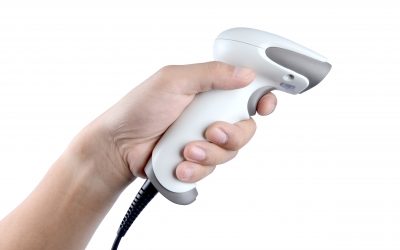Labeling refers to the identification of the medical device during its lifecycle. Labeling the medical device is a challenging task for manufacturers in an ever-complicated environment. And the activity of printing and assembling the etiquette on the MD can be sometimes resource consuming in terms of time and costs. And the ISO 13485 standard requirements for labeling sure does not make it easier:
- Managing the labels as quality records
- Maintaining documented procedures
- Implementing Unique Device Identification (UDI)
- Integrating Safety requirements
- Consideration of local regulations
- Managing the stage in the realization of the MD
- Setting the identification according to the outputs of monitoring and measurements activities
Read here more about the ISO 13485 standard requirements for identification.
Let us review a few of the challenges that may affect the labeling processes in the organization and may have implications on the QMS.
Setting the process of labeling
Let us leave for a moment the ISO 13485 Standard requirements, planning and implementing such process is not quite easy or more difficult as, for example planning the layout of a customer order. There are a many requirements to be considered, a special software is required and normally an external help is necessary. The process of labeling combines many elements:
- Implementing a process to manage the labels, for example when and how many were printed
- The information that must appear on the label: details of the MD, warnings, and other informative pictograms
- Choosing the most suitable software to produce the label
- Planning the activity of attaching the label to the MD
Changes
In a constant changing business and regulatory environment, the manufacturer must over and over change, update and improve its labeling activities. Changes that may influence the labeling:
- Changes in the MD
- Changes in regulatory requirements which require other or additional information to be placed on the label
- Changes in technology like when labeling systems become obsolete
Automation of processes
One disadvantage of manual labeling is the costs – when an error occurs, a whole batch of labels is gone to waste. Now, you may say, what the hell, a few etiquettes get thrown in the garbage. But there are MD to which each etiquettes costs a few dollars plus operation costs – Ink or toner of the printer and when the error occurs daily it becomes a load. One option is to automate the process. Automating the labeling process can be described like this:
- An employee finishes the assembly of a MD
- The employee is booking the operation into the process management system for example an ERP system
- The system identifies that the next operation is labeling and prints automatically the label with all the required information
- The label is attached to the MD or one of its components
Now I have been around the ERP business and the MD business for quite some time and can tell you that such process is definitely possible but requires a lot of resources:
- IT resources to be able to plan, characterize, program and implement such process
- IT infrastructure
- An ERP system that can provide the required outputs
- A labeling system that can receive the input and process the label
- Integrating The labeling activities with the existing IT processes in the organization, for example with the ERP system.
Choosing the right Software
One of the critical elements in the process of labeling is definitely the software for the labeling; There are software that was customized for the manufacturers needs and there are shelf products like licensed software for labels. The customized solution has its advantaged and disadvantages. For example, it is easier to implement the labeling activities in the manufacturing activities because the customized software was developed accordingly. But a disadvantage will be that maintaining the software and implementing changes can be very expensive. Another disadvantage – when new regulations or requirements appear, it is necessary to update the system individually whereas for a shelf system it will be done (presumably) by the vendor of the software.
Now as far as the ISO 13485 concerns, a robot can sit on a chair, draw the label with a pencil and glue it with 3 seconds glue to the medical device (as long as it does not ham the medical device or may harm the user)– it does not matter how but
- Which information will be on the label
- In which stage of the MD realization
- What is the status of the MD (the status must be visible through the label). By the way this status should reflect the outputs of monitoring and measurements activities.
- Which labeling regulations are applicable and whether they are implemented


Comments are closed.